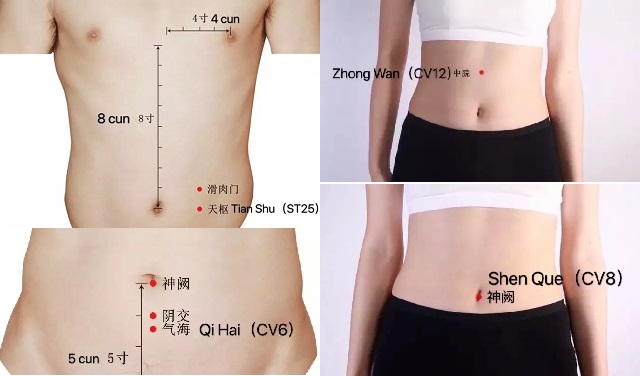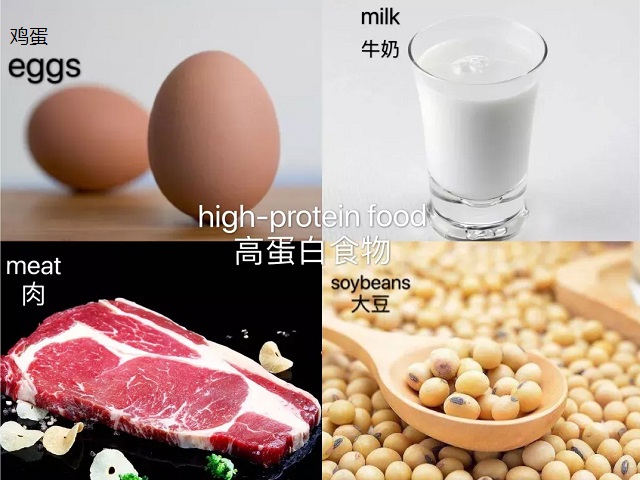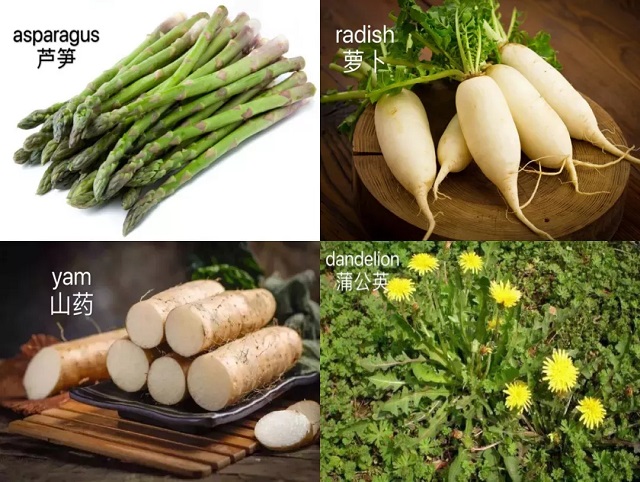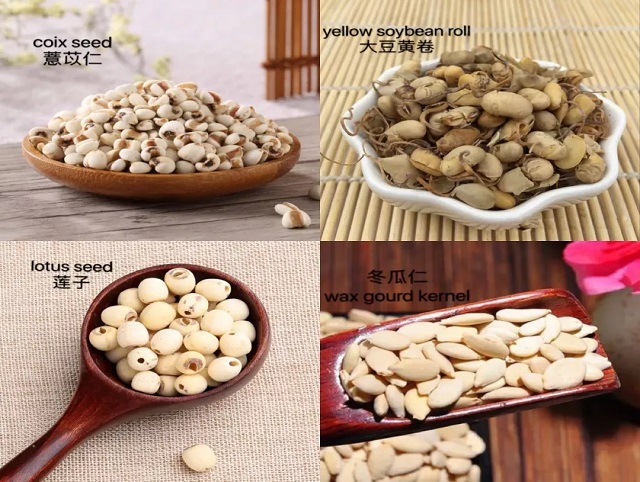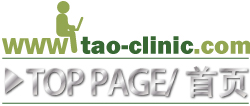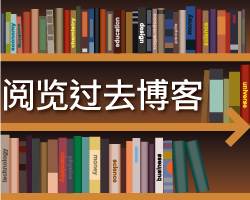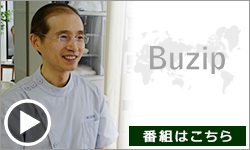2025-12-12
东瀛万事通・今日头条・中文導報・日本东方新报:北海道中国会举办第十二届总会&恳亲忘年会
2025-11-06
2025年北海道华侨华人春节联欢会盛大举行
2025-08-25
2025年“札幌中国节”成功举行 彩绘水墨画惊艳北海道 美声颂歌回响红砖广场
2025-07-31
陶永芳:我是世上最幸福的老人
2025-07-30
陶永芳:回想在日本住院的那些日子
2025-07-16
第2届全日本华侨华人业余高尔夫锦标赛&第11届北海道中国会杯高尔夫大会成功举行
2025-07-02
第60届中国人殉难者全道慰灵祭在北海道仁木町民中心举行
2024-12-16
肿瘤整合治疗联盟:第二届肿瘤整合治疗学术研讨会成功举办
2025-06-14
汗,是脾胃的镜子
2025-05-22
教你如何区分阴虚和阳虚,一学就会!
2025-02-24
艾灸最怕这一个字!90%的人做错,这样灸比吃补品更有效
2025-02-23
这些常见中药搭配,用对效果加倍
2025-02-02
中医和西医在治病原则区别
2025-02-01
李可老中医的一句话,拯救了无数肿瘤患者!
2025-01-26
仝小林院士:体病药论与治未病
2025-01-11
从五运六气看六经辨证
2023-12-06
黄帝内经治未病陶氏疗法在日本临床应用25年研讨⑪
2024-12-09
放几滴血,口腔溃疡就会痊愈,不信你试试!
2024-12-03
三魂七魄,看看哪个已不在您身上?
2024-12-02
中文导报 东瀛万事通 今日头条:北海道中国会举办第十一届总会&恳亲会
2024-11-09
艾烟,到底有没有害?
2024-10-13
经络不通,补什么都没用!只用一招:经络通畅百病消!
2024-10-08
你每天这样吸收大量阴气,怎么可能不生病?
2024-10-05
中医觉醒,认识经方——读懂《伤寒论》
2024-09-23
奥运体操全能王冈慎之助助阵:DENBA Moblie新品东京发表
2024-09-21
这样刮刮痧,活到八十八
2024-09-17
王振义被授予“共和国勋章”!他曾说:用循证研究证明中医药是个“宝”
2024-09-13
浙大调查发现:喜欢锻炼的人,患脑梗概率比久坐不动的人高数倍?
2024-09-04
“2024札幌中国节”成功举行 :彩绘水墨画惊艳北海道
2024-09-02
灸12原穴,断全身百病
2
中国中医抗疫经验全球分享之一(英/中文)
Multilingual (English/ Chinese)
Global Sharing on TCM Treatment of COVID—19 Epidemic of China
多语种(英/中文)
中国中医抗疫经验全球分享
Ontario College of Traditional Chinese Medicine
加拿大安大略中医学院
March 20th, 2020
2020年3月20日
(TCM treatment of COVID—19 epidemic, global sharing, informing the community, boundless beneficence)
(中医抗疫、全球分享、转发社区、功德无量。)
Global sharing on TCM treatment of COVID—19 epidemic of China (Multilingual)
多语种中国中医抗疫经验全球分享
(All communities are welcome to forward, please indicate the original source)
(欢迎各社区转发,请注明出处)
(At present, COVID-19 is spreading in various countries around the world. The contribution of Traditional Chinese Medicine in the anti-epidemic process in China is to reduce the psychological stress and fear, speed up the rate of mild recovery, reduce the chance of mild to become a severe one, reduce the mortality rate of severe illness, and provide treatment at the rehabilitation stage. For sharing the TCM anti-epidemic experience from China in the diverse communities in Canada and other countries around the world, some of OCTCM teachers and students have voluntarily set up the “COVID-19 TCM Treatment Information Research Group”. They have collected relevant authoritative datas, with the help of multilingual volunteers participating in the translation, compiled the datas into the material of “Multilingual TCM anti-epidemic experience of China global sharing”. This article is divided into two parts: “The Traditional Chinese Medicine method health preservation
and prevention of exterior pathogens”and“COVID-19 Traditional Chinese Medicine & Acupuncture Treatment Program (China)”. We are so grateful to the authors and units for the quotations in the appendix, and thankful to all the volunteers who have participated! Bin Jiang Wu Professor/ President of the Ontario College of Traditional Chinese Medicine)
(编者按: 目前,新型冠状病毒肺炎在世界各国蔓延,中医药在中国抗疫过程中的贡献是减轻恐惧心理压力、加快轻症痊愈率、减少轻症转重症、减少重症病死率、及康复阶段的治疗。为加拿大多元社区及世界各国分享中国中医抗疫经验,OCTCM学院的部份师生志愿组成“新冠病毒肺炎中医治疗信息研究课题组”, 收集相关权威资料,编译成“多语种中国中医抗疫经验全球分享”的资料。并有多语种志工参加翻译。本文分“中医药对外感疫病的预防保健”和“新冠病毒肺炎中药针灸治疗方案(中国)”两部份。我们对附录引文中的作者和单位一併表示感谢,对参与的志愿者和多语种志工表示感谢!吴滨江 教授/加拿大安大略中医学院院长)
Table of Contents
目录
A、“The Traditional Chinese Medicine method health preservation and prevention of exterior pathogens”
“中医药对外感疫病的预防保健”
1、Self Head Massage 自我头部推拿
2、Acupoints Press by Self 穴位自我推拿
3、Moxibustion 灸法
4、QiGong-BaDuanJin 气功一八段锦
5、Diet 食疗
A、“The Traditional Chinese Medicine and Acupuncture Treatment for syndrome presentations related to COVID-19 as experienced in China”
“新冠病毒肺炎中医药针灸治疗方案(中国)”
1、Traditional Chinese Medicine Treatment (7th Edition)
中医药方案(第七版)
2、Acupuncture Treatment
针灸方案
A、“The Traditional Chinese Medicine method for health preservation and prevention of exterior pathogens”
A、“中医药对外感疫病的预防保健”
**First wash hands with soap and water for at least 20 seconds
**首先用肥皂和水洗手至少20秒
1.Applying Simple Massage Techniques to Your Head and Face 自我头部推拿
1.Self-Massage for the Eyes眼部的保健推拿
1)Kneading Zanzhu (UB 2)
Apply the pads of the thumbs on Zanzhu (UB 2) in the depressions at the medial ends of the eyebrows. Knead this area with the thumbs 10 times. The force of kneading should be increased gradually until a slight feeling of soreness and distention occurs.
1) 揉 按攢竹(UB2)
以双手拇指罗紋面,分別按在双眉內側头凹陷处的攢竹穴处,由輕而重的反复輕揉约10次左右,以酸胀为宜(图1)。
2)Kneading Jingming (UB 1)
Place the thumb and the index finger of the right hand on Jingming (UB 1) which is located in the depression, 0.1 cun above the inner canthus (inner corners of the eyes). Alternate between pressing downwards and pinching 10 times.
2) 揉按睛明 (BL1)
以右手拇、食二指罗紋面,揉壓在兩目內眥角上1分凹陷中之睛明穴(BL1),先用力向下按壓;然后向上擠捏,如此一按一擠,反复進行,每次约10遍左右(图2)。
3)Pressing-Kneading Sibai (ST 2)
Place the index fingers on Sibai (ST 2) which is located 1 cun under the midpoint of the lower orbit (eye bone), and press-knead 10 times until you feel the sensation of slight soreness and distention.
3) 按揉四白 (ST2)
以双手食指罗紋面,分別按在眼下眶正中下1寸处的四白穴(ST2),反复按揉10次左右,以酸胀为宜(图3)。
4)Scraping the Orbits
Bending the index fingers, apply their radial sides against internal aspects of the upper orbits (upper eye bone) and scrape from the inner canthus to the outer. Continue the scraping with the lower orbits in the same way, for 10 times.
4) 刮眼輪
双手食指屈曲,以第二指節的橈側面紧貼上眼眶的內側端,自內向外推抹至眼眶的外側端;然后再如此推抹下眼眶,如此先上后下,自內向外反复;刮推约10次(图4)。
5)“Ironing” the Eyes
Close yours eyes slightly. Rub yours hands against each other until they create heat, and then cover the eyes with your palms as if “ironing” the eyes for about 30 seconds. Follow this procedure by rubbing the eyes gently 10 or more times.
5) 熨眼
双目輕閉,先將兩掌搓热,用双手掌根处輕壓热熨双目30鐘,再輕輕揉動10餘次(图5)。
6)Kneading the Temple—Taiyang (EX-HN5)
Apply strong pressure on Taiyang (EX-HN 5), with the pads of the thumbs or index fingers. Follow by kneading for 10 times until you feel a sensation of slight soreness and distention.
6) 揉太阳 (EX-H5)
以兩手拇指或食指罗紋面紧貼双側太阳穴处,反复按揉10次左右,以酸胀为宜(图6)。
Function. These manipulations are effective for the prevention and treatment of myopia, blurred vision, glaucoma, optic atrophy, and other eye diseases.
《作 用》 上法可防治近视眼、视物不清、青光眼、神经萎缩等各种目疾。
2.Self-Massage for the Nose 鼻部的保健推拿
I) Pressing-Kneading Yingxiang (LI 20)
Rest the pads of the index fingers on Yingxiang (LI 20), then press and knead them 10 times or until you feel the sensation of soreness and distention.
1) 按揉迎香(LI20)
以兩手中指罗紋面,按壓在双側迎香穴处,用力反复按揉10次左右,以酸胀为宜(图7)。
2) Rubbing the Nose (Sides)
Using the index or middle fingers of both hands, rub them against each other until you have created some heat. Then use these fingers to rub the nasolabial grooves (sides of the nostrils) up and down to warm them up. Repeat 10 times.
Function. These manipulations are effective for the prevention and treatment of colds, stuffy and running noses, allergic rhinitis, chronic rhinitis, and paranasal sinusitis.
2) 搓 擦 鼻 旁
先將兩手食指或中指掌面相对搓热,趁热在鼻翼兩側的鼻唇沟处,上、下搓擦,以热为宜。每次擦10次左右(图8)。
《作 用》 上法对防治感冒、鼻塞流涕、过敏性鼻炎、慢性鼻炎、副鼻竇炎等病症有效。
3.Self-massage for the Ears 耳部的保健推拿
1) Pressing-Kneading Points Surrounding the Ear
With the tips of the thumbs or the middle fingers, press and knead Ermen (SJ 21), Tinggong (Sl 19), Tinghui (GB 2), and Yifeng (SJ 17) 10 times each or until you feel a sensation of soreness or distention.
1) 按 揉 耳 周 諸 穴
以双手拇指端或中指端为著力點,分別按揉耳周围之耳門(SJ21)、聽宮(SI19)、聽会(GB2)与翳风(SJ17)等穴,每穴按揉10次左右,以酸胀为宜(图9)。
2) Rubbing the Helix of the Ear
Gently pinch the helices of the ear with the thumbs and the radial sides of the index fingers. Then rub upwards and downwards repeatedly 10 times or until the helices become hot.
2) 摩 擦 耳 轮
以双手拇指罗纹面与屈曲成弓状的食指桡侧面,轻轻捏住两侧耳轮,上下反复磨擦10次左右(图10)。
3)Ming Tiangu
Press both palms on the ears, the root of the palms pointing forwards and the fingers pointing backwards. Place the index fingers on top of the middle fingers and flick the protruded bones (occipital bone) behind the ears 10 times. This will produce a booming sound in the ears. Most of the vibratory stimulation that our ears receive comes through the external ear and inwardly. This manipulation creates the vibration in the inner ear, outwardly.
3) 鳴 天 鼓
以兩手掌心掩住兩耳孔,掌根在前,手指指向脑后,用食指搭在中指上,向下彈擊后高骨10次左右,使耳中隆隆作响(图11)。
Function. These manipulations are effective for the prevention and treatment of tinnitus, deafness, and other ear problems.
《作 用》 上法对防治耳鳴、重聽、耳聾、中耳炎等病症有效。
4.Self-massage for the Head 头部的保健推拿
1)Forehead Pushing (Both sides of the head)
Bend the two index fingers and using the radial sides push along the midline of the forehead, which runs from Yintang (EX-HN 3) (also known as Third Eye) to the anterior hairline. Press outwards the left and right sides of the head until you reach Taiyang (EX-HN 5) (also referred to as the temples), Sizhukong (SJ 23), and Touwei (ST 8). Repeat this sequence 10 times.
1) 分 推 前 額 ( 前 头 部 )
以印堂(EX-H3)至前發際正中之連線为中線,兩手食指屈成弓狀,用第二指節的橈側面为著力面,由下而上,自中線向前額兩側分別推至絲竹空(SJ23)、太阳(EX-H5)、头維穴(ST8)处,约10次左右(图12)。
2)Wiping the Temples
Press the temples with the whorled surfaces/pads of the thumbs and proceed to wipe forcefully backwards. Repeat 10 times. This manipulation should produce a slight sensation of soreness and distention.
2) 推 抹 太 阳 (EX-H5)( 側 头 部 )
推抹兩顳部太阳穴(EX-H5)以兩手拇指罗紋面,紧按兩鬢角处,由前向后反复用力推抹,约10次左右,以酸胀为宜(图13)。
3)Pressing-Kneading Skull (Back of the Head)
Place the whorled surfaces/ pads or tips of the thumbs firmly on Fengchi (GB 20) (the depressions below the occipital bone) and press them 10 or more times. Follow this manipulation with circular kneading. Continue by kneading the points of Naokong (GB 19) 10 times or until there is a sensation of slight soreness and distention.
3) 揉 按 脑 后 ( 后 头 部 )
以兩拇指罗紋或指端,紧按风池穴(GB20),先用力按压10余次,再作旋轉按揉,隨后再按揉脑后空穴约10次左右,以酸胀为宜(图14)。
4)Pressing-Kneading Baihui (GV (Du) 20) and Sishencong (EX-HN 1)
Place the tips of the middle fingers on Baihui (GV (Du)) and press/knead 8-10 times. Do the same for Sishencong (EX-HN 1), the points beside, above and below Baihui (GV (Du) 20), 2-4 times.
4) 揉 按 百 会 (DU20)及 四 神 聪(EX-N1)( 头 顶 部 )
双手中指指腹着力于百会穴(DU20),按揉约8-10次左右,然后在四神聪(EX-N1)各穴亦法按揉约2-4次左右(图15)。
5)“Bathing the Face”
Rub the hands against each until they become warm. Place the palms lightly against the forehead, then rub firmly down to the mandibles (jawbone), along the mandible margins on the sides of the face towards Jiache (ST 6), and then upwards via the pre-auricular area (in front of the ears) toward the temples and end at the midpoint of the forehead. Repeat the sequence 6-8 times or until the face feels warm.
5) 搓 手 浴 面
先將兩手搓热,随后掌心紧貼前額,用力向下擦到下頜,再沿下頜下緣向外至颊车,再向上经耳前、鬢角轉推至前額中間,如此反复旋转推摩面颊,次约6-8遍左右,以面部有热感为宜(图16)。
Function. These manipulations invigorate the brain, improve intelligence, and tranquilize the mind. They are effective in the treatment of headaches, dizziness, insomnia, amnesia, neurosis, and facial paralysis.
《作 用》 上法有健脑、益智、安神之功,对防治头痛、头暈、失眠、健忘、神经衰弱、面瘫等病症有效。
2. Tuina(Acupoints Press) by Self穴位自我推拿
Tuina(Acupressure) is a sort of manipulation that stimulates acupoints to achieve the purpose of dredging the meridians, regulating yin and yang and strengthening the body’s immunity. The manipulation can be divided into two steps, which are selecting acupoints and pressing acupoints. As for the current epidemic situation, we recommend the four acupoints: Da Zhui (DU14), Feng Chi (GB20), Zhong Fu (LU1) and Zu San Li (ST36). Let’s find these acupuncture points together!
推拿(穴位按压)是通过手法刺激穴位,达到疏通经络,调和阴阳,增强人体免疫力的作用。操作时可分为两种步骤,一是选定穴位,二是对穴位进行按压操作。针对疫情,我们推荐以下四个穴位, 分别是大椎,风池,中府和足三里。接下来我们一起找一找这些穴位吧!
Da Zhui (DU14) is located at the posterior mid-line of the neck and in the depression of the seventh cervical spinous process. The acupoint can be found while taking seated position with head drop; the most prominent vertebrae that can be touched on the neck is the seventh cervical vertebrae, and the depression under the seventh cervical vertebrae is DU14 acupoint. DU14 is an acupoint of the governor vessel which can invigorate yang and enhance the body’s ability to resist the pathogenic qi.
大椎穴位于项部,在人体后正中线上,第七颈椎棘突下凹陷中。取穴时正坐低头,在颈部能摸到的最突出的椎骨就是第七颈椎,第七颈椎下方的凹陷处就是大椎穴。大椎穴是督脉上的穴位,可以振奋阳气,增强人体抵抗病邪的能力。
Feng Chi (GB20) is located below the occipital bone and in the depression between the upper end of the trapezius muscle and sternocleidomastoid muscle. The acupoint can be taken while sitting straightening your elbow and raising your hand, when the elbows are at the same height as shoulders, bend your elbows towards your head with fingers open naturally, palms of both hands cover the ears, fingers hold the head to push the thumbs up, the depression under the thumbs are GB20. GB20, an important acupoint for treating exogenous diseases such as headache and fever, can dispel pathogenic wind and expel pathogen.
风池穴位于枕骨之下,斜方肌上端与胸锁乳突肌上的凹陷中。取穴时正坐,直臂抬肘,肘与肩同高,屈肘向头,食指自然张开,双手掌心贴着耳朵,食指抱头拇指向上推,大拇指指腹下的凹陷处就是风池穴。风池穴可以祛风散邪,是治疗头痛,发热等外感疾病的重要穴位。
Zhong Fu (LU1) is located on the upper lateral chest, 6 cun lateral to the anterior midline and at the same level with the first intercostal space. When taking the acupoint, please place your hands on your waist with elbows slightly forward and chest slightly backward, then find the triangular depression at the lower edge of the lateral end of the clavicle bone, pushes your finger vertically downward for about 1 cm, where the LU1 acupoint is. LU1 is an acupoint of lung meridian,indicated for respiratory diseases such as cough, asthma and chest pain.
中府穴位于胸部,横平第一肋间隙,锁骨下窝外侧,前正中线旁开6寸。取穴时双手插腰,肘部向前,微微含胸,首先找到锁骨外侧端下缘的三角形凹陷,手指从这个凹陷正中垂直往下推大约一厘米就是中府穴。中府穴为肺经的穴位,擅长治疗咳嗽,气喘,胸痛等呼吸系统疾病。
Zu San Li (ST36) is located on the outside of the calf, 3 cun below Du Bi (ST35), and a horizontal finger (middle finger) length next to anterior tibia. When taking the acupoint, please take a seated position, straighten your calf, and find the upper outer edge of the kneecap, place part of the hand (between the thumb and index finger) surround the upper outer edge of the kneecap with four fingers pointing straight down, and the middle fingertip is the ST36 acupoints. ST36 is an important acupoint for health preserving, and it also has significance effect on replenishing the spleen and stomach.
足三里位于小腿外侧,犊鼻下3寸,胫骨前脊旁开一横指(中指)。取穴时取坐位,伸直小腿,先在膝盖上方找到髌骨上外缘,用同侧手掌开虎口,围住髌骨上外缘,四指直指向下,中指尖处就是足三里穴。足三里是人体最重要的强壮保健穴,还具有显著的调补脾胃的功效。
After finding all the acupoints, we can use our finger pulp to press on the selected acupoints and then knead 3 times in clockwise direction, this method is called as ‘one press three knead’, repeat this method for 50-100 times. It is necessary to reach a degree of soreness and slight warm sensation on the local area for each time. Pressing the acupoint starts from DU14, following by both sides of GB20, LU1 and ST36, these points can be pressed once in morning and evening respectively. It maybe inconvenient for the elder people to press DU14,, you may ask family members for help or use another simple method to stimulate DU14 acupoint. Open your hands with palms slightly protruded, rub your palm quickly until you feel the palms are hot, then quickly place your palms on the DU14 point, so that the heat can penetrate through DU14. After that, use the palm of your hand to rub on DU14 points back and forth, repeat this method for 3-5 minutes.
找准穴位后就可以开始按压操作了,我们可以在刚才选定的穴位上用指腹用力按压穴位一下,然后以顺时针方向揉按三下,称为一按三揉,一按三揉为一次,每次操作50-100次,每次操作以穴位局部酸胀感或发热感为度。穴位按压从大椎穴开始,依次为双侧的风池穴,中府穴,足三里穴,每日早晚可以各按一次。对于老年人而言,按压大椎穴的操作可能不太方便,可以请家人帮忙操作 。同时我们也可以利用另外一种简单的方法来刺激大椎穴,张开双手,掌心微微外突,两手掌心相对,快速摩擦,感受到掌心温热后继续摩擦,直到感觉掌心发烫之后,迅速将手掌置于大椎穴上,使热度能够渗透到大椎穴,然后用手掌在大椎穴局部做快速的左右来回摩擦,重复操作3-5分钟。
When performing acupressure, there are following precautions:
1.When performing acupressure, keep our whole body muscles relaxed and breathe evenly.
2.The order of the acupoints can be from up to down, left to right.
3.Apply the lasting force evenly, gently, and avoid pressing too hard.
4.Acupressure is not allowed on damaged skin.
穴位按压时,有以下注意事项:
1 )在进行穴位按压疗法时,要保持全身肌肉放松,呼吸均匀。
2)穴位的顺序可先上后下,先左后右。
3)操作时用力要均匀,揉和,持久,禁止使用暴力。
4)皮肤破损的部位禁止穴位按压。
3. Moxibustion灸法
Moxibustion can significantly improve the body's immunity, and it has the function of antivirus, relieving cough and asthma, and relaxing emotion. The smoke produced by the burning of moxa sticks can dispel filth with aroma. It can be used for air sterilization. When using at home, we can choose warm moxibustion box or portable moxibustion according to the circumstance. According to the length of the three-hole moxibustion box, we take navel (Shen Que acupoint, CV8) as the center, and the rectangular area of about 9 cm above and below and about 4 cm left and right is used as the moxibustion site.
灸法可以显著提高机体免疫力,具有抗病毒、止咳平喘,以及舒缓情绪等作用。艾条燃烧产生的烟雾具有芳香辟秽的作用,可以用作空气消毒。居家使用时,大家可以根据情况选择温灸盒灸或随身灸两种方式,根据三孔灸盒的长度,我们以肚脐(神阙穴)为中心,上下各约9厘米,左右大约4厘米的长方形区域作为施灸的部位。
Shen Que acupoint (CV8), Qi Hai acupoint (CV6) and Guan Yuan acupoint (CV4) in this area are important health care acupoints, and they have the function of strengthening human immunity and resisting diseases and pathogen. Zhong Wan acupoint (CV12) and Tian Shu acupoint (ST25) can substantially regulate gastrointestinal function. The instruments prepared for moxibustion includes: three-hole moxibustion box, moxa sticks, lighters, knives, tweezers and small water utensils. Take a moxa stick and divide it evenly into three sections with a knife, light one end, respectively inserted into the holes above the moxibustion box.
这个区域内的神阙穴、气海穴、关元穴、都是人体重要的保健穴位,具有增强人体免疫力、抵御病邪的作用。中脘穴和天枢穴具有显著的调节胃肠功能的作用。施灸需要准备的器具包括:三孔灸盒、艾条、打火机、小刀、镊子、小型盛水器具。取一根艾条,用小刀将其平均地分为三段,用打火机将其一端点燃,分别插入灸盒上方的灸孔当中。
You can supine on the bed, or on the sofa, and place the second hole of the rectangular three-hole moxibustion box directly to the navel (CV8). The long side of the moxibustion box is parallel to the longitudinal axis of the body, covering CV12, CV8, CV6 and CV4. The short side of the moxibustion box is parallel to the horizontal axis of the body, covering ST25. Moxibustion duration should be about 20 to 30 minutes at a time. Each section of moxibustion stick should be burnt at least 1/2 of the length, or until the moxibustion stick burns out. This can be adjusted according to your time or your tolerance towards warmth.
您可以仰卧在床上,或者是沙发的一侧,将长方形三孔灸盒的第二个孔正对肚脐(神阙穴),施灸盒的长边与身体的纵轴平行,覆盖中脘、神阙、气海、关元穴,而灸盒的短边与身体的水平轴平行,覆盖两侧的天枢穴。每次施灸的时间大约20至30分钟,每段灸条至少应灸完1/2的长度,或者直至灸条燃尽,这可以根据你的时间或者你对温热的感受来进行自行调节。
If you feel the moxibustion smoke is too heavy accept, you can divide the moxa stick into 5 segments, lit the end respectively, and put into the portable moxibustion box, then put the boxes in the matching bag to receive portable moxibustion. You can stand, tie the matching bag on the waist, putting the center moxibustion box right to the middle of the belly button, so that moxibustion area can cover the acupoints we just mentioned: CV 12, CV 8, RN 6, CV 4, ST 25. It takes about 20 to 30 minutes to accomplish moxibustion. Please pay attention to the following points when applying moxibustion.
如果您觉得温灸盒施灸烟雾过大,不易接受,也可以采用随身灸法,您可以将一根灸条平均分为5小段,分别将其一端点燃,放入随身灸盒当中,随后再将灸盒依次放入配套的布袋中,您可以取站立位,将布袋系在腰部上,让正中的灸盒正对肚脐,这样施灸的区域就可以涉及我们刚才提到的中脘、神阙、关元、气海、天枢穴。施灸的时间大约20至30分钟,施灸时有如下的注意事项,请您留意。
1)Warm moxibustion box moxibustion is suitable for those who can tolerate heavy moxibustion smoke, and those who can't receive moxibustion box moxibustion can choose portable moxibustion.
2)In the process of moxibustion, please close the doors and windows or cover the doors and windows slightly to ensure the efficacy of moxibustion smoke on indoor air disinfection.
3)When the local temperature of moxibustion decreases, place the moxibustion box on the ground at first, then take out the moxa stick, gently flick the end of moxa stick, so that moxa ash falls into the water container such as ceramic bowl, then insert moxa stick, and press down 0.5cm-1cm to adjust the local moxibustion temperature.
4)The aged, infirm and diabetic patients should be alert to the low temperature scald.
5)Drinking 100-150ml warm boiled water after moxibustion can relieve the dry mouth and nose after moxibustion.
6)After moxibustion, it must be placed in a ceramic bowl filled with water to extinguish.
1)温灸盒灸适用于可接受较大艾灸烟雾者,不能接受者可酌情选择随身灸。
2)施灸过程中请关闭门窗或轻掩门窗,以保证灸烟对室内空气消毒效用。
3)当施灸局部温度降低时,先将灸盒放置在地面上,然后将艾条取出,轻弹艾条尾端,使艾灰掉落至陶瓷碗等盛水容器内,再插入艾条,向下按压0.5cm-1cm,以调整局部施灸温度。
4)年老体弱、糖尿病患者应警惕低温烫伤。
5)灸后饮用100-150ml温开水,可缓解艾灸后的口鼻千燥。
6)艾条易燃难灭,灸后务必将其置于盛水的陶瓷碗内熄灭。
4. Qi Gong--- Ba Duan Jin 气功:八段锦
Benefit of Ba Duan Jin (eight Brocade):
Nourish Yin and fortify Yang, consolidate basis and Tonify Qi, clear blockage in meridian and activates blood and nourishes body fluids. Long term practices could strengthen body, enhances hearing and eyesight, prolong life. In modern term, it will exercises the whole body’s joints and muscles, regulates emotion and relieves stress and anxiety, improves metabolism, enhances cardiac function and blood circulation, so that the whole being will be enhanced in every way.
八段锦的功效:
简单概述为滋阴助阳、培元补气、疏通经络、活血生津。长期锻练可使人强身健体、聪耳明目、延年益寿。用现代科学医术分析,就是活动全身关节、肌肉、调节精神紧张、改善新陈代谢、增强心肺功能、促进血液循环,从而提高人体各个生理机能。
1)Two Hands Hold up the Heavens (Shuang Shou Tuo Tian)
This move is said to stimulate the “Triple Burner”, it consists of an upward movement of the hands, which are loosely joined and travel up the center of the body.
1)双手托天理三焦
2)Drawing the Bow to Shoot the Eagle / Hawk / Vulture
While in a lower horse stance, the practitioner imitates the action of drawing a bow to either side. It is said to exercise the waist area, focusing on the kidneys and spleen.
2)左右开弓似射雕
3)Separate Heaven and Earth
This resembles a version of the first piece with the hands pressing in opposite directions, one up and one down. A smooth motion in which the hands switch positions is the main action, and it is said to especially stimulate the stomach.
3)调理脾胃须单举
4. Wise Owl Gazes Backwards or Look Back
This is a stretch of the neck to the left and the right in an alternating fashion.
4)五劳七伤向后瞧
5)Sway the Head and Shake the Tail
This is said to regulate the function of the heart and lungs. Its primary aim is to remove excess heat (or fire) from the heart. In performing this piece, the practitioner squats in a low horse stance, places the hands on thighs with the elbows facing out and twists to glance backwards on each side.
5)摇头摆尾去心火
6)Two Hands Hold the Feet to Strengthen the Kidneys and Waist
This involves a stretch upwards followed by a forward bend and a holding of the toes.
6)两手攀足固肾腰
7)Clench the Fists and Glare Fiercely (or Angrily)
This resembles the second piece, and is largely a punching movement either to the sides or forward while in horse stance. This, which is the most external of the pieces, is aimed at increasing general vitality and muscular strength.
7)攥拳怒目增气力
8)Bouncing on the Toes
This is a push upward from the toes with a small rocking motion on landing. The gentle shaking vibrations of this piece is said to “smooth out”the qi after practice of the preceding seven pieces or, in some systems, this is more specifically to follow Sway the Head and Shake the Tail.
8)背后七颠百病消
5 .Diets 食疗
1)Keep a Healthy Balanced Diet
合理饮食
Cook food thoroughly and take in balanced nutrition. Eat high-protein food everyday such as eggs, milk, meat, soybeans, etc. Eating proper fresh vegetables and fruits and drinking plenty of water are also recommend. Some medicinal and edible plants are also advocated, such as radish, asparagus, yam, dandelion, coix seed, yellow soybean roll, lotus seed, wax gourd kernel, etc. And do not eat wild animals.
饮食煮熟煮透,营养搭配均衡,每天摄入高蛋白食物,如蛋、奶、肉、大豆等,不食野生动物。适当新鲜蔬菜和水果,多饮水。可食用一些药食同源的食物,如萝卜、芦笋、山药、蒲公英、薏苡仁、大豆黄卷 、莲子、冬瓜仁等。
2)Prescription for Prevention
预防处方
Formula: saposhnikovia root15g, astragalus root20g, wild buckwheat15g, weeping forsythia capsule5g, scutellaria root15g, agastache15g, licorice root 6g.
Decoction and usage: soak the herbs in water for 10 minutes, and after the water is boiled, simmer it for 30 minutes. Concentrate it into 600ml and drink one dose for two days. It is also good to drink traditional Chinese medicine as tea.
防风15克,黄芪20克,金荞麦15克,连翘15克,黄芩15克,藿香15克,甘草6克。
煎服法:此方泡10分钟,大火煮开小火慢煮30分钟,浓缩成600ml,2日1剂,亦可以茶饮。
https://mp.weixin.qq.com/s/6rK-FhmLx6wpLb7O4DT8ag
Global Sharing on TCM Treatment of COVID—19 Epidemic of China
多语种(英/中文)
中国中医抗疫经验全球分享
Ontario College of Traditional Chinese Medicine
加拿大安大略中医学院
March 20th, 2020
2020年3月20日
(TCM treatment of COVID—19 epidemic, global sharing, informing the community, boundless beneficence)
(中医抗疫、全球分享、转发社区、功德无量。)
Global sharing on TCM treatment of COVID—19 epidemic of China (Multilingual)
多语种中国中医抗疫经验全球分享
(All communities are welcome to forward, please indicate the original source)
(欢迎各社区转发,请注明出处)
(At present, COVID-19 is spreading in various countries around the world. The contribution of Traditional Chinese Medicine in the anti-epidemic process in China is to reduce the psychological stress and fear, speed up the rate of mild recovery, reduce the chance of mild to become a severe one, reduce the mortality rate of severe illness, and provide treatment at the rehabilitation stage. For sharing the TCM anti-epidemic experience from China in the diverse communities in Canada and other countries around the world, some of OCTCM teachers and students have voluntarily set up the “COVID-19 TCM Treatment Information Research Group”. They have collected relevant authoritative datas, with the help of multilingual volunteers participating in the translation, compiled the datas into the material of “Multilingual TCM anti-epidemic experience of China global sharing”. This article is divided into two parts: “The Traditional Chinese Medicine method health preservation
and prevention of exterior pathogens”and“COVID-19 Traditional Chinese Medicine & Acupuncture Treatment Program (China)”. We are so grateful to the authors and units for the quotations in the appendix, and thankful to all the volunteers who have participated! Bin Jiang Wu Professor/ President of the Ontario College of Traditional Chinese Medicine)
(编者按: 目前,新型冠状病毒肺炎在世界各国蔓延,中医药在中国抗疫过程中的贡献是减轻恐惧心理压力、加快轻症痊愈率、减少轻症转重症、减少重症病死率、及康复阶段的治疗。为加拿大多元社区及世界各国分享中国中医抗疫经验,OCTCM学院的部份师生志愿组成“新冠病毒肺炎中医治疗信息研究课题组”, 收集相关权威资料,编译成“多语种中国中医抗疫经验全球分享”的资料。并有多语种志工参加翻译。本文分“中医药对外感疫病的预防保健”和“新冠病毒肺炎中药针灸治疗方案(中国)”两部份。我们对附录引文中的作者和单位一併表示感谢,对参与的志愿者和多语种志工表示感谢!吴滨江 教授/加拿大安大略中医学院院长)
Table of Contents
目录
A、“The Traditional Chinese Medicine method health preservation and prevention of exterior pathogens”
“中医药对外感疫病的预防保健”
1、Self Head Massage 自我头部推拿
2、Acupoints Press by Self 穴位自我推拿
3、Moxibustion 灸法
4、QiGong-BaDuanJin 气功一八段锦
5、Diet 食疗
A、“The Traditional Chinese Medicine and Acupuncture Treatment for syndrome presentations related to COVID-19 as experienced in China”
“新冠病毒肺炎中医药针灸治疗方案(中国)”
1、Traditional Chinese Medicine Treatment (7th Edition)
中医药方案(第七版)
2、Acupuncture Treatment
针灸方案
A、“The Traditional Chinese Medicine method for health preservation and prevention of exterior pathogens”
A、“中医药对外感疫病的预防保健”
**First wash hands with soap and water for at least 20 seconds
**首先用肥皂和水洗手至少20秒
1.Applying Simple Massage Techniques to Your Head and Face 自我头部推拿
1.Self-Massage for the Eyes眼部的保健推拿
1)Kneading Zanzhu (UB 2)
Apply the pads of the thumbs on Zanzhu (UB 2) in the depressions at the medial ends of the eyebrows. Knead this area with the thumbs 10 times. The force of kneading should be increased gradually until a slight feeling of soreness and distention occurs.
1) 揉 按攢竹(UB2)
以双手拇指罗紋面,分別按在双眉內側头凹陷处的攢竹穴处,由輕而重的反复輕揉约10次左右,以酸胀为宜(图1)。
2)Kneading Jingming (UB 1)
Place the thumb and the index finger of the right hand on Jingming (UB 1) which is located in the depression, 0.1 cun above the inner canthus (inner corners of the eyes). Alternate between pressing downwards and pinching 10 times.
2) 揉按睛明 (BL1)
以右手拇、食二指罗紋面,揉壓在兩目內眥角上1分凹陷中之睛明穴(BL1),先用力向下按壓;然后向上擠捏,如此一按一擠,反复進行,每次约10遍左右(图2)。
3)Pressing-Kneading Sibai (ST 2)
Place the index fingers on Sibai (ST 2) which is located 1 cun under the midpoint of the lower orbit (eye bone), and press-knead 10 times until you feel the sensation of slight soreness and distention.
3) 按揉四白 (ST2)
以双手食指罗紋面,分別按在眼下眶正中下1寸处的四白穴(ST2),反复按揉10次左右,以酸胀为宜(图3)。
4)Scraping the Orbits
Bending the index fingers, apply their radial sides against internal aspects of the upper orbits (upper eye bone) and scrape from the inner canthus to the outer. Continue the scraping with the lower orbits in the same way, for 10 times.
4) 刮眼輪
双手食指屈曲,以第二指節的橈側面紧貼上眼眶的內側端,自內向外推抹至眼眶的外側端;然后再如此推抹下眼眶,如此先上后下,自內向外反复;刮推约10次(图4)。
5)“Ironing” the Eyes
Close yours eyes slightly. Rub yours hands against each other until they create heat, and then cover the eyes with your palms as if “ironing” the eyes for about 30 seconds. Follow this procedure by rubbing the eyes gently 10 or more times.
5) 熨眼
双目輕閉,先將兩掌搓热,用双手掌根处輕壓热熨双目30鐘,再輕輕揉動10餘次(图5)。
6)Kneading the Temple—Taiyang (EX-HN5)
Apply strong pressure on Taiyang (EX-HN 5), with the pads of the thumbs or index fingers. Follow by kneading for 10 times until you feel a sensation of slight soreness and distention.
6) 揉太阳 (EX-H5)
以兩手拇指或食指罗紋面紧貼双側太阳穴处,反复按揉10次左右,以酸胀为宜(图6)。
Function. These manipulations are effective for the prevention and treatment of myopia, blurred vision, glaucoma, optic atrophy, and other eye diseases.
《作 用》 上法可防治近视眼、视物不清、青光眼、神经萎缩等各种目疾。
2.Self-Massage for the Nose 鼻部的保健推拿
I) Pressing-Kneading Yingxiang (LI 20)
Rest the pads of the index fingers on Yingxiang (LI 20), then press and knead them 10 times or until you feel the sensation of soreness and distention.
1) 按揉迎香(LI20)
以兩手中指罗紋面,按壓在双側迎香穴处,用力反复按揉10次左右,以酸胀为宜(图7)。
2) Rubbing the Nose (Sides)
Using the index or middle fingers of both hands, rub them against each other until you have created some heat. Then use these fingers to rub the nasolabial grooves (sides of the nostrils) up and down to warm them up. Repeat 10 times.
Function. These manipulations are effective for the prevention and treatment of colds, stuffy and running noses, allergic rhinitis, chronic rhinitis, and paranasal sinusitis.
2) 搓 擦 鼻 旁
先將兩手食指或中指掌面相对搓热,趁热在鼻翼兩側的鼻唇沟处,上、下搓擦,以热为宜。每次擦10次左右(图8)。
《作 用》 上法对防治感冒、鼻塞流涕、过敏性鼻炎、慢性鼻炎、副鼻竇炎等病症有效。
3.Self-massage for the Ears 耳部的保健推拿
1) Pressing-Kneading Points Surrounding the Ear
With the tips of the thumbs or the middle fingers, press and knead Ermen (SJ 21), Tinggong (Sl 19), Tinghui (GB 2), and Yifeng (SJ 17) 10 times each or until you feel a sensation of soreness or distention.
1) 按 揉 耳 周 諸 穴
以双手拇指端或中指端为著力點,分別按揉耳周围之耳門(SJ21)、聽宮(SI19)、聽会(GB2)与翳风(SJ17)等穴,每穴按揉10次左右,以酸胀为宜(图9)。
2) Rubbing the Helix of the Ear
Gently pinch the helices of the ear with the thumbs and the radial sides of the index fingers. Then rub upwards and downwards repeatedly 10 times or until the helices become hot.
2) 摩 擦 耳 轮
以双手拇指罗纹面与屈曲成弓状的食指桡侧面,轻轻捏住两侧耳轮,上下反复磨擦10次左右(图10)。
3)Ming Tiangu
Press both palms on the ears, the root of the palms pointing forwards and the fingers pointing backwards. Place the index fingers on top of the middle fingers and flick the protruded bones (occipital bone) behind the ears 10 times. This will produce a booming sound in the ears. Most of the vibratory stimulation that our ears receive comes through the external ear and inwardly. This manipulation creates the vibration in the inner ear, outwardly.
3) 鳴 天 鼓
以兩手掌心掩住兩耳孔,掌根在前,手指指向脑后,用食指搭在中指上,向下彈擊后高骨10次左右,使耳中隆隆作响(图11)。
Function. These manipulations are effective for the prevention and treatment of tinnitus, deafness, and other ear problems.
《作 用》 上法对防治耳鳴、重聽、耳聾、中耳炎等病症有效。
4.Self-massage for the Head 头部的保健推拿
1)Forehead Pushing (Both sides of the head)
Bend the two index fingers and using the radial sides push along the midline of the forehead, which runs from Yintang (EX-HN 3) (also known as Third Eye) to the anterior hairline. Press outwards the left and right sides of the head until you reach Taiyang (EX-HN 5) (also referred to as the temples), Sizhukong (SJ 23), and Touwei (ST 8). Repeat this sequence 10 times.
1) 分 推 前 額 ( 前 头 部 )
以印堂(EX-H3)至前發際正中之連線为中線,兩手食指屈成弓狀,用第二指節的橈側面为著力面,由下而上,自中線向前額兩側分別推至絲竹空(SJ23)、太阳(EX-H5)、头維穴(ST8)处,约10次左右(图12)。
2)Wiping the Temples
Press the temples with the whorled surfaces/pads of the thumbs and proceed to wipe forcefully backwards. Repeat 10 times. This manipulation should produce a slight sensation of soreness and distention.
2) 推 抹 太 阳 (EX-H5)( 側 头 部 )
推抹兩顳部太阳穴(EX-H5)以兩手拇指罗紋面,紧按兩鬢角处,由前向后反复用力推抹,约10次左右,以酸胀为宜(图13)。
3)Pressing-Kneading Skull (Back of the Head)
Place the whorled surfaces/ pads or tips of the thumbs firmly on Fengchi (GB 20) (the depressions below the occipital bone) and press them 10 or more times. Follow this manipulation with circular kneading. Continue by kneading the points of Naokong (GB 19) 10 times or until there is a sensation of slight soreness and distention.
3) 揉 按 脑 后 ( 后 头 部 )
以兩拇指罗紋或指端,紧按风池穴(GB20),先用力按压10余次,再作旋轉按揉,隨后再按揉脑后空穴约10次左右,以酸胀为宜(图14)。
4)Pressing-Kneading Baihui (GV (Du) 20) and Sishencong (EX-HN 1)
Place the tips of the middle fingers on Baihui (GV (Du)) and press/knead 8-10 times. Do the same for Sishencong (EX-HN 1), the points beside, above and below Baihui (GV (Du) 20), 2-4 times.
4) 揉 按 百 会 (DU20)及 四 神 聪(EX-N1)( 头 顶 部 )
双手中指指腹着力于百会穴(DU20),按揉约8-10次左右,然后在四神聪(EX-N1)各穴亦法按揉约2-4次左右(图15)。
5)“Bathing the Face”
Rub the hands against each until they become warm. Place the palms lightly against the forehead, then rub firmly down to the mandibles (jawbone), along the mandible margins on the sides of the face towards Jiache (ST 6), and then upwards via the pre-auricular area (in front of the ears) toward the temples and end at the midpoint of the forehead. Repeat the sequence 6-8 times or until the face feels warm.
5) 搓 手 浴 面
先將兩手搓热,随后掌心紧貼前額,用力向下擦到下頜,再沿下頜下緣向外至颊车,再向上经耳前、鬢角轉推至前額中間,如此反复旋转推摩面颊,次约6-8遍左右,以面部有热感为宜(图16)。
Function. These manipulations invigorate the brain, improve intelligence, and tranquilize the mind. They are effective in the treatment of headaches, dizziness, insomnia, amnesia, neurosis, and facial paralysis.
《作 用》 上法有健脑、益智、安神之功,对防治头痛、头暈、失眠、健忘、神经衰弱、面瘫等病症有效。
2. Tuina(Acupoints Press) by Self穴位自我推拿
Tuina(Acupressure) is a sort of manipulation that stimulates acupoints to achieve the purpose of dredging the meridians, regulating yin and yang and strengthening the body’s immunity. The manipulation can be divided into two steps, which are selecting acupoints and pressing acupoints. As for the current epidemic situation, we recommend the four acupoints: Da Zhui (DU14), Feng Chi (GB20), Zhong Fu (LU1) and Zu San Li (ST36). Let’s find these acupuncture points together!
推拿(穴位按压)是通过手法刺激穴位,达到疏通经络,调和阴阳,增强人体免疫力的作用。操作时可分为两种步骤,一是选定穴位,二是对穴位进行按压操作。针对疫情,我们推荐以下四个穴位, 分别是大椎,风池,中府和足三里。接下来我们一起找一找这些穴位吧!
Da Zhui (DU14) is located at the posterior mid-line of the neck and in the depression of the seventh cervical spinous process. The acupoint can be found while taking seated position with head drop; the most prominent vertebrae that can be touched on the neck is the seventh cervical vertebrae, and the depression under the seventh cervical vertebrae is DU14 acupoint. DU14 is an acupoint of the governor vessel which can invigorate yang and enhance the body’s ability to resist the pathogenic qi.
大椎穴位于项部,在人体后正中线上,第七颈椎棘突下凹陷中。取穴时正坐低头,在颈部能摸到的最突出的椎骨就是第七颈椎,第七颈椎下方的凹陷处就是大椎穴。大椎穴是督脉上的穴位,可以振奋阳气,增强人体抵抗病邪的能力。
Feng Chi (GB20) is located below the occipital bone and in the depression between the upper end of the trapezius muscle and sternocleidomastoid muscle. The acupoint can be taken while sitting straightening your elbow and raising your hand, when the elbows are at the same height as shoulders, bend your elbows towards your head with fingers open naturally, palms of both hands cover the ears, fingers hold the head to push the thumbs up, the depression under the thumbs are GB20. GB20, an important acupoint for treating exogenous diseases such as headache and fever, can dispel pathogenic wind and expel pathogen.
风池穴位于枕骨之下,斜方肌上端与胸锁乳突肌上的凹陷中。取穴时正坐,直臂抬肘,肘与肩同高,屈肘向头,食指自然张开,双手掌心贴着耳朵,食指抱头拇指向上推,大拇指指腹下的凹陷处就是风池穴。风池穴可以祛风散邪,是治疗头痛,发热等外感疾病的重要穴位。
Zhong Fu (LU1) is located on the upper lateral chest, 6 cun lateral to the anterior midline and at the same level with the first intercostal space. When taking the acupoint, please place your hands on your waist with elbows slightly forward and chest slightly backward, then find the triangular depression at the lower edge of the lateral end of the clavicle bone, pushes your finger vertically downward for about 1 cm, where the LU1 acupoint is. LU1 is an acupoint of lung meridian,indicated for respiratory diseases such as cough, asthma and chest pain.
中府穴位于胸部,横平第一肋间隙,锁骨下窝外侧,前正中线旁开6寸。取穴时双手插腰,肘部向前,微微含胸,首先找到锁骨外侧端下缘的三角形凹陷,手指从这个凹陷正中垂直往下推大约一厘米就是中府穴。中府穴为肺经的穴位,擅长治疗咳嗽,气喘,胸痛等呼吸系统疾病。
Zu San Li (ST36) is located on the outside of the calf, 3 cun below Du Bi (ST35), and a horizontal finger (middle finger) length next to anterior tibia. When taking the acupoint, please take a seated position, straighten your calf, and find the upper outer edge of the kneecap, place part of the hand (between the thumb and index finger) surround the upper outer edge of the kneecap with four fingers pointing straight down, and the middle fingertip is the ST36 acupoints. ST36 is an important acupoint for health preserving, and it also has significance effect on replenishing the spleen and stomach.
足三里位于小腿外侧,犊鼻下3寸,胫骨前脊旁开一横指(中指)。取穴时取坐位,伸直小腿,先在膝盖上方找到髌骨上外缘,用同侧手掌开虎口,围住髌骨上外缘,四指直指向下,中指尖处就是足三里穴。足三里是人体最重要的强壮保健穴,还具有显著的调补脾胃的功效。
After finding all the acupoints, we can use our finger pulp to press on the selected acupoints and then knead 3 times in clockwise direction, this method is called as ‘one press three knead’, repeat this method for 50-100 times. It is necessary to reach a degree of soreness and slight warm sensation on the local area for each time. Pressing the acupoint starts from DU14, following by both sides of GB20, LU1 and ST36, these points can be pressed once in morning and evening respectively. It maybe inconvenient for the elder people to press DU14,, you may ask family members for help or use another simple method to stimulate DU14 acupoint. Open your hands with palms slightly protruded, rub your palm quickly until you feel the palms are hot, then quickly place your palms on the DU14 point, so that the heat can penetrate through DU14. After that, use the palm of your hand to rub on DU14 points back and forth, repeat this method for 3-5 minutes.
找准穴位后就可以开始按压操作了,我们可以在刚才选定的穴位上用指腹用力按压穴位一下,然后以顺时针方向揉按三下,称为一按三揉,一按三揉为一次,每次操作50-100次,每次操作以穴位局部酸胀感或发热感为度。穴位按压从大椎穴开始,依次为双侧的风池穴,中府穴,足三里穴,每日早晚可以各按一次。对于老年人而言,按压大椎穴的操作可能不太方便,可以请家人帮忙操作 。同时我们也可以利用另外一种简单的方法来刺激大椎穴,张开双手,掌心微微外突,两手掌心相对,快速摩擦,感受到掌心温热后继续摩擦,直到感觉掌心发烫之后,迅速将手掌置于大椎穴上,使热度能够渗透到大椎穴,然后用手掌在大椎穴局部做快速的左右来回摩擦,重复操作3-5分钟。
When performing acupressure, there are following precautions:
1.When performing acupressure, keep our whole body muscles relaxed and breathe evenly.
2.The order of the acupoints can be from up to down, left to right.
3.Apply the lasting force evenly, gently, and avoid pressing too hard.
4.Acupressure is not allowed on damaged skin.
穴位按压时,有以下注意事项:
1 )在进行穴位按压疗法时,要保持全身肌肉放松,呼吸均匀。
2)穴位的顺序可先上后下,先左后右。
3)操作时用力要均匀,揉和,持久,禁止使用暴力。
4)皮肤破损的部位禁止穴位按压。
3. Moxibustion灸法
Moxibustion can significantly improve the body's immunity, and it has the function of antivirus, relieving cough and asthma, and relaxing emotion. The smoke produced by the burning of moxa sticks can dispel filth with aroma. It can be used for air sterilization. When using at home, we can choose warm moxibustion box or portable moxibustion according to the circumstance. According to the length of the three-hole moxibustion box, we take navel (Shen Que acupoint, CV8) as the center, and the rectangular area of about 9 cm above and below and about 4 cm left and right is used as the moxibustion site.
灸法可以显著提高机体免疫力,具有抗病毒、止咳平喘,以及舒缓情绪等作用。艾条燃烧产生的烟雾具有芳香辟秽的作用,可以用作空气消毒。居家使用时,大家可以根据情况选择温灸盒灸或随身灸两种方式,根据三孔灸盒的长度,我们以肚脐(神阙穴)为中心,上下各约9厘米,左右大约4厘米的长方形区域作为施灸的部位。
Shen Que acupoint (CV8), Qi Hai acupoint (CV6) and Guan Yuan acupoint (CV4) in this area are important health care acupoints, and they have the function of strengthening human immunity and resisting diseases and pathogen. Zhong Wan acupoint (CV12) and Tian Shu acupoint (ST25) can substantially regulate gastrointestinal function. The instruments prepared for moxibustion includes: three-hole moxibustion box, moxa sticks, lighters, knives, tweezers and small water utensils. Take a moxa stick and divide it evenly into three sections with a knife, light one end, respectively inserted into the holes above the moxibustion box.
这个区域内的神阙穴、气海穴、关元穴、都是人体重要的保健穴位,具有增强人体免疫力、抵御病邪的作用。中脘穴和天枢穴具有显著的调节胃肠功能的作用。施灸需要准备的器具包括:三孔灸盒、艾条、打火机、小刀、镊子、小型盛水器具。取一根艾条,用小刀将其平均地分为三段,用打火机将其一端点燃,分别插入灸盒上方的灸孔当中。
You can supine on the bed, or on the sofa, and place the second hole of the rectangular three-hole moxibustion box directly to the navel (CV8). The long side of the moxibustion box is parallel to the longitudinal axis of the body, covering CV12, CV8, CV6 and CV4. The short side of the moxibustion box is parallel to the horizontal axis of the body, covering ST25. Moxibustion duration should be about 20 to 30 minutes at a time. Each section of moxibustion stick should be burnt at least 1/2 of the length, or until the moxibustion stick burns out. This can be adjusted according to your time or your tolerance towards warmth.
您可以仰卧在床上,或者是沙发的一侧,将长方形三孔灸盒的第二个孔正对肚脐(神阙穴),施灸盒的长边与身体的纵轴平行,覆盖中脘、神阙、气海、关元穴,而灸盒的短边与身体的水平轴平行,覆盖两侧的天枢穴。每次施灸的时间大约20至30分钟,每段灸条至少应灸完1/2的长度,或者直至灸条燃尽,这可以根据你的时间或者你对温热的感受来进行自行调节。
If you feel the moxibustion smoke is too heavy accept, you can divide the moxa stick into 5 segments, lit the end respectively, and put into the portable moxibustion box, then put the boxes in the matching bag to receive portable moxibustion. You can stand, tie the matching bag on the waist, putting the center moxibustion box right to the middle of the belly button, so that moxibustion area can cover the acupoints we just mentioned: CV 12, CV 8, RN 6, CV 4, ST 25. It takes about 20 to 30 minutes to accomplish moxibustion. Please pay attention to the following points when applying moxibustion.
如果您觉得温灸盒施灸烟雾过大,不易接受,也可以采用随身灸法,您可以将一根灸条平均分为5小段,分别将其一端点燃,放入随身灸盒当中,随后再将灸盒依次放入配套的布袋中,您可以取站立位,将布袋系在腰部上,让正中的灸盒正对肚脐,这样施灸的区域就可以涉及我们刚才提到的中脘、神阙、关元、气海、天枢穴。施灸的时间大约20至30分钟,施灸时有如下的注意事项,请您留意。
1)Warm moxibustion box moxibustion is suitable for those who can tolerate heavy moxibustion smoke, and those who can't receive moxibustion box moxibustion can choose portable moxibustion.
2)In the process of moxibustion, please close the doors and windows or cover the doors and windows slightly to ensure the efficacy of moxibustion smoke on indoor air disinfection.
3)When the local temperature of moxibustion decreases, place the moxibustion box on the ground at first, then take out the moxa stick, gently flick the end of moxa stick, so that moxa ash falls into the water container such as ceramic bowl, then insert moxa stick, and press down 0.5cm-1cm to adjust the local moxibustion temperature.
4)The aged, infirm and diabetic patients should be alert to the low temperature scald.
5)Drinking 100-150ml warm boiled water after moxibustion can relieve the dry mouth and nose after moxibustion.
6)After moxibustion, it must be placed in a ceramic bowl filled with water to extinguish.
1)温灸盒灸适用于可接受较大艾灸烟雾者,不能接受者可酌情选择随身灸。
2)施灸过程中请关闭门窗或轻掩门窗,以保证灸烟对室内空气消毒效用。
3)当施灸局部温度降低时,先将灸盒放置在地面上,然后将艾条取出,轻弹艾条尾端,使艾灰掉落至陶瓷碗等盛水容器内,再插入艾条,向下按压0.5cm-1cm,以调整局部施灸温度。
4)年老体弱、糖尿病患者应警惕低温烫伤。
5)灸后饮用100-150ml温开水,可缓解艾灸后的口鼻千燥。
6)艾条易燃难灭,灸后务必将其置于盛水的陶瓷碗内熄灭。
4. Qi Gong--- Ba Duan Jin 气功:八段锦
Benefit of Ba Duan Jin (eight Brocade):
Nourish Yin and fortify Yang, consolidate basis and Tonify Qi, clear blockage in meridian and activates blood and nourishes body fluids. Long term practices could strengthen body, enhances hearing and eyesight, prolong life. In modern term, it will exercises the whole body’s joints and muscles, regulates emotion and relieves stress and anxiety, improves metabolism, enhances cardiac function and blood circulation, so that the whole being will be enhanced in every way.
八段锦的功效:
简单概述为滋阴助阳、培元补气、疏通经络、活血生津。长期锻练可使人强身健体、聪耳明目、延年益寿。用现代科学医术分析,就是活动全身关节、肌肉、调节精神紧张、改善新陈代谢、增强心肺功能、促进血液循环,从而提高人体各个生理机能。
1)Two Hands Hold up the Heavens (Shuang Shou Tuo Tian)
This move is said to stimulate the “Triple Burner”, it consists of an upward movement of the hands, which are loosely joined and travel up the center of the body.
1)双手托天理三焦
2)Drawing the Bow to Shoot the Eagle / Hawk / Vulture
While in a lower horse stance, the practitioner imitates the action of drawing a bow to either side. It is said to exercise the waist area, focusing on the kidneys and spleen.
2)左右开弓似射雕
3)Separate Heaven and Earth
This resembles a version of the first piece with the hands pressing in opposite directions, one up and one down. A smooth motion in which the hands switch positions is the main action, and it is said to especially stimulate the stomach.
3)调理脾胃须单举
4. Wise Owl Gazes Backwards or Look Back
This is a stretch of the neck to the left and the right in an alternating fashion.
4)五劳七伤向后瞧
5)Sway the Head and Shake the Tail
This is said to regulate the function of the heart and lungs. Its primary aim is to remove excess heat (or fire) from the heart. In performing this piece, the practitioner squats in a low horse stance, places the hands on thighs with the elbows facing out and twists to glance backwards on each side.
5)摇头摆尾去心火
6)Two Hands Hold the Feet to Strengthen the Kidneys and Waist
This involves a stretch upwards followed by a forward bend and a holding of the toes.
6)两手攀足固肾腰
7)Clench the Fists and Glare Fiercely (or Angrily)
This resembles the second piece, and is largely a punching movement either to the sides or forward while in horse stance. This, which is the most external of the pieces, is aimed at increasing general vitality and muscular strength.
7)攥拳怒目增气力
8)Bouncing on the Toes
This is a push upward from the toes with a small rocking motion on landing. The gentle shaking vibrations of this piece is said to “smooth out”the qi after practice of the preceding seven pieces or, in some systems, this is more specifically to follow Sway the Head and Shake the Tail.
8)背后七颠百病消
5 .Diets 食疗
1)Keep a Healthy Balanced Diet
合理饮食
Cook food thoroughly and take in balanced nutrition. Eat high-protein food everyday such as eggs, milk, meat, soybeans, etc. Eating proper fresh vegetables and fruits and drinking plenty of water are also recommend. Some medicinal and edible plants are also advocated, such as radish, asparagus, yam, dandelion, coix seed, yellow soybean roll, lotus seed, wax gourd kernel, etc. And do not eat wild animals.
饮食煮熟煮透,营养搭配均衡,每天摄入高蛋白食物,如蛋、奶、肉、大豆等,不食野生动物。适当新鲜蔬菜和水果,多饮水。可食用一些药食同源的食物,如萝卜、芦笋、山药、蒲公英、薏苡仁、大豆黄卷 、莲子、冬瓜仁等。
2)Prescription for Prevention
预防处方
Formula: saposhnikovia root15g, astragalus root20g, wild buckwheat15g, weeping forsythia capsule5g, scutellaria root15g, agastache15g, licorice root 6g.
Decoction and usage: soak the herbs in water for 10 minutes, and after the water is boiled, simmer it for 30 minutes. Concentrate it into 600ml and drink one dose for two days. It is also good to drink traditional Chinese medicine as tea.
防风15克,黄芪20克,金荞麦15克,连翘15克,黄芩15克,藿香15克,甘草6克。
煎服法:此方泡10分钟,大火煮开小火慢煮30分钟,浓缩成600ml,2日1剂,亦可以茶饮。
https://mp.weixin.qq.com/s/6rK-FhmLx6wpLb7O4DT8ag
